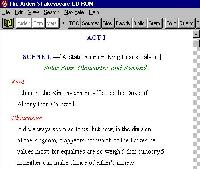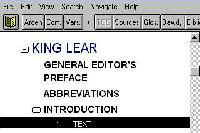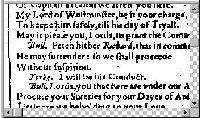1. Consider, for example, the
word "abhor" from Othello (4.2.164). While glossed adequately in the
commentary, to seek further input from Onions and Eagleson, one must select that resource,
and then use the scroll bar to find "abhor" from the full list. To return,
however, one need only select the hypertextual link to the line reference.
2. This error appeared, specifically, during
discussion of Shakespeare's indebtedness to Holinshed in the "Sources" section
of the introduction to King Lear; each time I encountered it, I was forced to exit
and re-launch the program. The error message read "Unhandled Exception: String
reference out of range. OK to resume?" giving the option of "Yes" or
"No." Choosing to resume by selecting "Yes," however, only returned
the same error message.
3. Convincing responses to such claims have
focussed on pragmatics, as they refer to the developers, and issues of audience. In
addition to the fact that, while dated, there is still a good amount of useful information
in the Arden 2 texts, Kind and Bate note (and this is repeated by Kind in his letter to
the Times Literary Supplement) that the project was conceived of in 1995 -- a time
when the Arden 3 series had hardly started -- and took three years to realise; to
incorporate a mix of Arden 2 and 3 texts at the time, or to update the CD as each third
series text became available, would be cost-prohibitive. Kind also notes
("Arden") that the intended audience for this CD is the student, and not the
expert Shakespearean who is conversant with the range of pertinent contemporary scholarly
issues and, also, with the intricacies of search languages and textual encoding.
4. See Siemens (15).
5. The greater price refers to the CD with a 1-10
concurrent user network licence; the lesser price, reduced in response to comments about
the affordability of the product, is for the CD with a 1-4 concurrent user network
licence.




